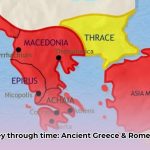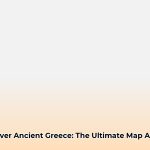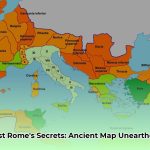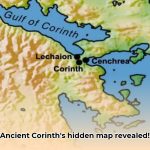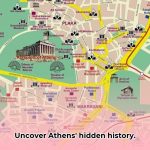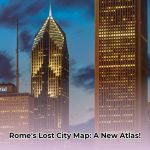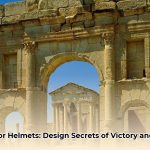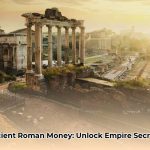Delving into the intricate urban fabric of ancient Rome offers unparalleled insights for contemporary urban planners, historians, and enthusiasts alike. This meticulously crafted digital atlas serves as an essential temporal conduit, enabling a profound exploration of the Eternal City as it once stood. By leveraging sophisticated tools, we can unearth its legendary hills, its strategically carved valleys, and its bustling thoroughfares. This article will meticulously examine why the study of ancient Rome maps online provides such vital understanding of its foundational geography and Roman urban planning principles. See a great example of a well labeled Rome map. We will then critically compare the diverse digital resources available, offering a precise guide for their accurate navigation. Furthermore, expert counsel will be shared to highlight critical pitfalls to circumvent when engaging with compelling digital Rome reconstruction models. Finally, we will explore strategies for comprehending the enduring legacy of historical cartography and provide community-tested methodologies for maximizing the benefits of ancient Rome mapping. Welcome to the digitally re-envisioned Eternal City!
Unveiling Ancient Rome’s Urban Evolution: Insights for Modern Planning
For urban planners, comprehending the genesis and metamorphosis of cities is a perpetual pursuit. Rome, with its millennia of layered history etched into its very foundations, presents an unparalleled case study. Emerging digital tools and extensive archaeological findings are profoundly enhancing our grasp of ancient Roman geography and the intricate layout of the city.
Digital Cartography: A Window into Ancient Rome
Contemporary advancements offer manifold avenues for visualizing ancient Rome through digital maps and archaeological documentation. These resources range from highly detailed visual representations of historical structures to interactive simulations that allow for immersive exploration of the ancient cityscape. However, discerning the reliability of these resources necessitates a critical, investigative approach. Verifying information by cross-referencing multiple digital maps, consulting historical texts, and scrutinizing archaeological reports is paramount. When subjected to such rigorous scrutiny, these historical interpretation tools transform into invaluable resources, providing robust and dependable insights. Why merely conceptualize the past when one can virtually inhabit it?
Navigating the Digital Landscape of Roman Cartography
A wealth of digital resources for exploring ancient Rome’s cartographic heritage is readily accessible. These include specialized digital maps, interactive web platforms, and extensive online image repositories, serving as foundational blueprints for deeper analysis. Consider these reputable starting points for your journey into Roman urban planning:
- Digital Maps of the Ancient World: Roma: An excellent foundational resource for comprehensive understanding of ancient Rome topography.
- Rome Map 360: Ancient Rome Map: Offers diverse perspectives for detailed exploration of the city’s urban development.
- Archaeology Travel: Interactive Map of the Roman World: Provides dynamic interaction, ideal for users interested in GIS applications within historical contexts.
- Wikimedia Commons: Category:Maps of ancient Rome (city): An expansive archive of visual materials pertinent to Roman architecture.
- History Bibliotheca: Map of Ancient Rome: Offers in-depth historical analysis underpinning visual representations of the city.
Who Benefits from Roman Digital Maps? A Stakeholder Analysis
The utility of these digital maps extends across a broad spectrum of disciplines and user groups, yielding both immediate and long-term advantages:
| User Group | Current Applications | Future Potential |
|---|---|---|
| Educators and Students | Facilitating visual learning of ancient Rome, establishing connections between cartographic data, historical texts, and archaeological evidence. | Development of immersive learning resources, including augmented reality (AR) applications, that animate Rome’s past, enhancing comprehension of its history and urban evolution. |
| Tourists and Travelers | Employing a city map ancient Rome for spatial orientation during visits, recognizing the necessity of local guides for profound experiential engagement. | Integration with AR applications that overlay historical information onto contemporary physical sites, delivering a richer, more profound virtual heritage experience. |
| Historians and Archaeologists | Contributing to collaborative digital projects, updating maps with recent discoveries, and rectifying identified inaccuracies. | Establishment of clear, standardized guidelines for map creation and dissemination, ensuring accuracy, interoperability, and universal accessibility for ongoing digital archaeology and historical cartography research. |
| Urban Planners and Designers | Analyzing historical land use patterns, infrastructure development, and city growth dynamics to inform modern planning and preservation strategies. | Utilizing advanced spatial analysis tools to simulate historical urban interventions and their long-term impacts, aiding in sustainable urban development and adaptive reuse projects. |
Iconic Landmarks and Defining Features
Certain elements of ancient Rome are unequivocally central to its identity. Among them stand:
- The Colosseum (Amphitheatrum Flavium): A colossal amphitheater, originally known in antiquity as the Flavian Amphitheater, a testament to Roman engineering and the grandeur of public entertainment. Its modern name likely derives from the colossal bronze statue of Emperor Nero (later adapted into the sun god Sol) that stood nearby, originally part of Nero’s Domus Aurea (Golden House).
- The Roman Forum: The pulsating heart of political, religious, and economic life, a profound testament to sophisticated Roman infrastructure and societal organization.
- The Pantheon: An architectural marvel dedicated to all gods, renowned for its perfectly proportioned dome and enduring structural integrity.
- The Tiber River: The vital artery of early Rome, fundamental to its foundation, sustenance, and strategic defense before the extensive network of aqueducts emerged. The river witnessed pivotal events, including the Battle of the Milvian Bridge, where Emperor Maxentius met his demise. Just upstream, Tiber Island (Insula Tiberina) served as a significant site for temples and, remarkably, has housed a hospital since the 16th century. It is connected by the ancient Pons Cestius and the Pons Fabricius, the latter, completed in 62 BC, being Rome’s oldest original bridge still standing.
- The Circus Maximus: Located between the Palatine and Aventine Hills, this ancient chariot-racing stadium, capable of seating over 150,000 spectators, predated the Colosseum in hosting gladiatorial contests and beast hunts.
- The Imperial Fora: A complex of monumental public squares including the Fora of Augustus, Caesar, and Trajan, the latter being particularly vast with its associated libraries, Basilica Ulpia, Temple of Trajan, and Trajan’s Column, all serving as centers of administration and commerce.
- The Baths of Diocletian (Thermae Diocletianae): Begun in AD 298 and completed by Constantius, this immense bath complex served as a social and recreational hub for centuries until its water supply was severed during the Gothic wars in AD 537.
- The Servian Wall: Said to be Rome’s original defensive perimeter, primarily constructed in the early 4th century BC. This approximately 7-mile (11 km) long wall, reaching heights of 33 ft (10 m) and thicknesses of 12 ft (3.6 m) in places, used volcanic tuff.
- The Aurelian Walls: Erected between AD 271-275 under Emperor Aurelian, these dramatically larger and more robust fortifications, measuring about 12 miles (19 km) long, 26 ft (8 m) high, and 11 ft (3.5 m) thick (later doubled in height), reflected Rome’s vulnerability to barbarian incursions and internal strife. Composed of brick and concrete, they featured guard towers every 97 feet (30 m). The Castra Praetoria, barracks of the elite Praetorian Guard, were notably incorporated into these walls.
Navigating these digital recreations, it is crucial to acknowledge their inherent interpretative nature. While highly detailed, they are reconstructions based on archaeological evidence and historical scholarship. The precision of every replicated brick is an ongoing scholarly endeavor.
The Linguistic Imperative in Classical Studies
For scholars engaged in serious classical studies, a foundational understanding of Latin nomenclature is indispensable. Many historical maps and primary sources utilize Latin terms exclusively, making linguistic proficiency a critical tool for accurate interpretation and cross-referencing.
The Seven Hills: Topographical Determinants of Rome’s Destiny
Rome’s geographical identity is inextricably linked to its iconic Seven Hills: the Aventine, Palatine, Capitoline, Caelian, Esquiline, Viminal, and Quirinal. These elevations were not merely topographical features; they profoundly influenced the city’s strategic defense, urban layout, and subsequent urban evolution. Defensive structures, such as the Servian and Aurelian Walls, not only demarcated the city’s boundaries but actively shaped its outward expansion and internal development over centuries.
Rome: From Republic to Empire – Cartographic Narratives of Power
Comparing the map of Republican Rome with that of Imperial Rome reveals a profound narrative of shifting power dynamics and urban transformation. The architectural details and prevailing historical context embedded within each map illuminate the stark contrast between the city’s earlier, perhaps more utilitarian, character and the later, grander, monumental scale of the Imperial age. This evolution, starkly visible in the city’s changing architectural face, serves as a powerful testament to the impact of political change on urban form.
Understanding these historical frameworks is vital for the future of urban planning. By critically engaging with digital humanities resources, we cultivate a deeper appreciation for Rome’s growth trajectory and derive invaluable lessons applicable to contemporary urban challenges. It is important to note that ongoing research continually refines and occasionally reconfigures existing historical conclusions.
Assessing the Accuracy of Ancient Roman Maps
Key Takeaways:
- Roman cartography was primarily utilitarian, emphasizing functional connectivity over absolute spatial precision.
- Distance measurements relied on innovative, albeit limited, tools such as odometers.
- Diverse map genres, including itineraria (road maps) and the Forma Urbis Romae (marble plan of Rome), served distinct administrative and military objectives, each with varying degrees of inherent accuracy.
- Distortions were common due to technological limitations in measuring latitude and longitude, and the deliberate emphasis on routes and strategic points.
- The enduring legacy of Roman cartography lies in its foundational influence on subsequent mapmaking traditions and its pioneering contribution to modern GIS applications.
The Roman Cartographic Ethos: Pragmatism Over Perfection
The Romans did not prioritize the precise geographical accuracy characteristic of modern mapping. Their cartographic endeavors were driven by pragmatic imperatives: facilitating vast military expansion, consolidating administrative control, and streamlining imperial trade routes. Essentially, Roman cartography was a direct instrument of imperial power. So, the question of how accurate ancient Rome maps truly were is best answered by considering their intended purpose.
Unlike a modern street map designed for scaled navigation, Roman maps often functioned as schematic representations. They prioritized legible routes and critical connections for their sprawling Roman Empire over a pristine, mathematically accurate scale. Their primary objective was to facilitate movement and management.
Tools and Techniques for Imperial Measurement
The Roman odometer, a wheeled device equipped to record distances, represented a significant technological advancement. It enabled remarkably accurate distance calculations, particularly along their meticulously constructed road networks. This ancient device, akin to a modern vehicle’s trip meter, was indispensable for strategic military planning and the efficient management of resources across the empire. The astonishing precision of Roman aqueducts, maintaining consistent gradients over vast distances, further underscores their advanced surveying capabilities. Surveying instruments such as the groma, a cross-staff used for establishing right angles, were routinely employed by agrimensores (land surveyors) for the precise demarcation of land plots and the meticulous layout of Roman roads.
A Diverse Cartographic Repertoire for a Sprawling Empire
The Roman Empire fostered a diverse array of map types, each tailored to specific needs:
- Itineraria: These were fundamental road maps, essentially linear guides listing towns, intermediate rest stops, and precise distances between them. The Peutinger Table (Tabula Peutingeriana), a medieval copy of an ancient Roman road map, offers an invaluable, if distorted, glimpse into this genre. Despite its compressed and stretched representation, it effectively conveyed travel routes across the empire.
- Forma Urbis Romae: This monumental marble plan of Rome, originally affixed to a wall within the Temple of Peace, provided an astonishingly detailed depiction of the city’s layout, structures, and streets. Though fragments remain, it offers unparalleled insights into Roman urban planning, functioning as an early, highly comprehensive city plan. It depicted every street, building, and even individual shops, almost to scale, within the 3rd century AD city limits.
- Agrippa’s Map: Mandated by Emperor Augustus and compiled over two decades by Marcus Vipsanius Agrippa, this ambitious world map, while lost to history, signifies the paramount importance of cartography for Roman administration and imperial consolidation. It was displayed publicly in the Porticus Vipsania in Rome.
Accuracy Versus Utility: The Roman Pragmatic Balance
Acknowledge that Roman maps were not flawless. The precise determination of longitude, a fundamental challenge, led to spatial distortions. Regions might be stretched or compressed to emphasize critical routes, administrative centers, or strategically important territories. This was a cartographic challenge that persisted for centuries.
However, drawing a parallel to a modern subway map, which prioritizes the sequence of stations and connections over geographical accuracy, Roman maps similarly focused on delivering essential information for practical navigation. The exact curvature of a coastline was less important than knowing the most efficient route to the next military outpost or the precise distance between two key cities.
The Enduring Legacy of Roman Cartography
The Roman approach to mapmaking profoundly shaped the evolution of cartography and spatial cognition. Their pragmatic and functional design principles influenced subsequent mapmaking traditions across Europe and beyond. Modern georeferenced maps and sophisticated GIS applications, employed across diverse fields from urban planning to environmental management, owe a significant debt to the Romans’ pioneering use of maps for governance, military strategy, and large-scale infrastructure development. Projects like Open Rome continue to illuminate how studying Roman maps unlocks deeper comprehension of the Roman world, linking ancient wisdom with cutting-edge digital methodologies.
Why Explore Ancient Rome Maps Online: Unlocking Topographical Insights
Key Takeaways:
- The Open Rome project is a transformative initiative in the field of spatial history.
- It is meticulously constructing a georeferenced and digitally annotated database detailing Rome’s urban evolution.
- This project renders previously inaccessible foundational maps readily available for both rigorous academic research and broad public engagement.
- Open Rome effectively bridges traditional historical scholarship with advanced modern digital methodologies.
- It provides a nuanced, multi-layered perspective on Rome’s past, facilitating detailed exploration of urban development complexities.
- Its adherence to open data standards actively promotes scholarly collaboration and knowledge dissemination.
Digital Cartography: The Enduring Allure of Rome’s Past
Have you ever contemplated how starkly different Rome might appear if viewed through the discerning eyes of its ancient inhabitants? Exploring ancient Rome maps online offers more than a mere glimpse; it provides a profound portal through time, revealing insights into the city’s inherent structure and protracted evolution that conventional textbooks frequently cannot convey. The compelling answer to Why Explore Ancient Rome Maps Online – Topography Insights? These maps transcend mere static imagery; they are dynamic analytical instruments capable of unveiling intricate layers of history, underpinning social dynamics, and even revealing the political aspirations embedded within the city’s urban landscape.
Envision layers upon layers of meticulously cataloged data, each revealing stories etched in stone, monumental architecture, and precise spatial arrangements. It is akin to meticulously peeling back the strata of time, exposing the foundational skeletal framework of the city and bringing to light millennia of human endeavor and ingenuity.
The Open Rome Project: A Paradigm Shift in Digital Atlases
The Open Rome project stands as a compelling exemplar of this transformative potential. Building upon the foundational legacies of revered cartographers such as Giovanni Battista Nolli and Rodolfo Lanciani, this ambitious initiative aims to construct a comprehensive, georeferenced digital database of Rome’s intricate urban development. In practice, this means that previously inaccessible or siloed cartographic data is now openly available, seamlessly integrated into both rigorous academic research and diverse educational settings. This meticulous approach represents a powerful synthesis, bridging traditional historical scholarship with contemporary digital archaeology methodologies. It embodies a truly collaborative spirit, underscoring the profound knowledge accrued when interdisciplinary fields converge.
Empowering Researchers and Planners: Practical Applications
Consider the expansive possibilities for researchers: unparalleled ease in accessing and analyzing vast quantities of cartographic data. Delving into the city’s urban evolution becomes dramatically
- Craving Ancient Roman Snacks? Unveiling Secrets & Recipes: Longtail Spotlight - August 15, 2025
- Lost in History? Labeled Ancient Rome Map Reveals Empire’s Secrets Today! - August 15, 2025
- Unearth Ancient City Map Rome: New Atlas For Urban Planners [Reference] - August 15, 2025

